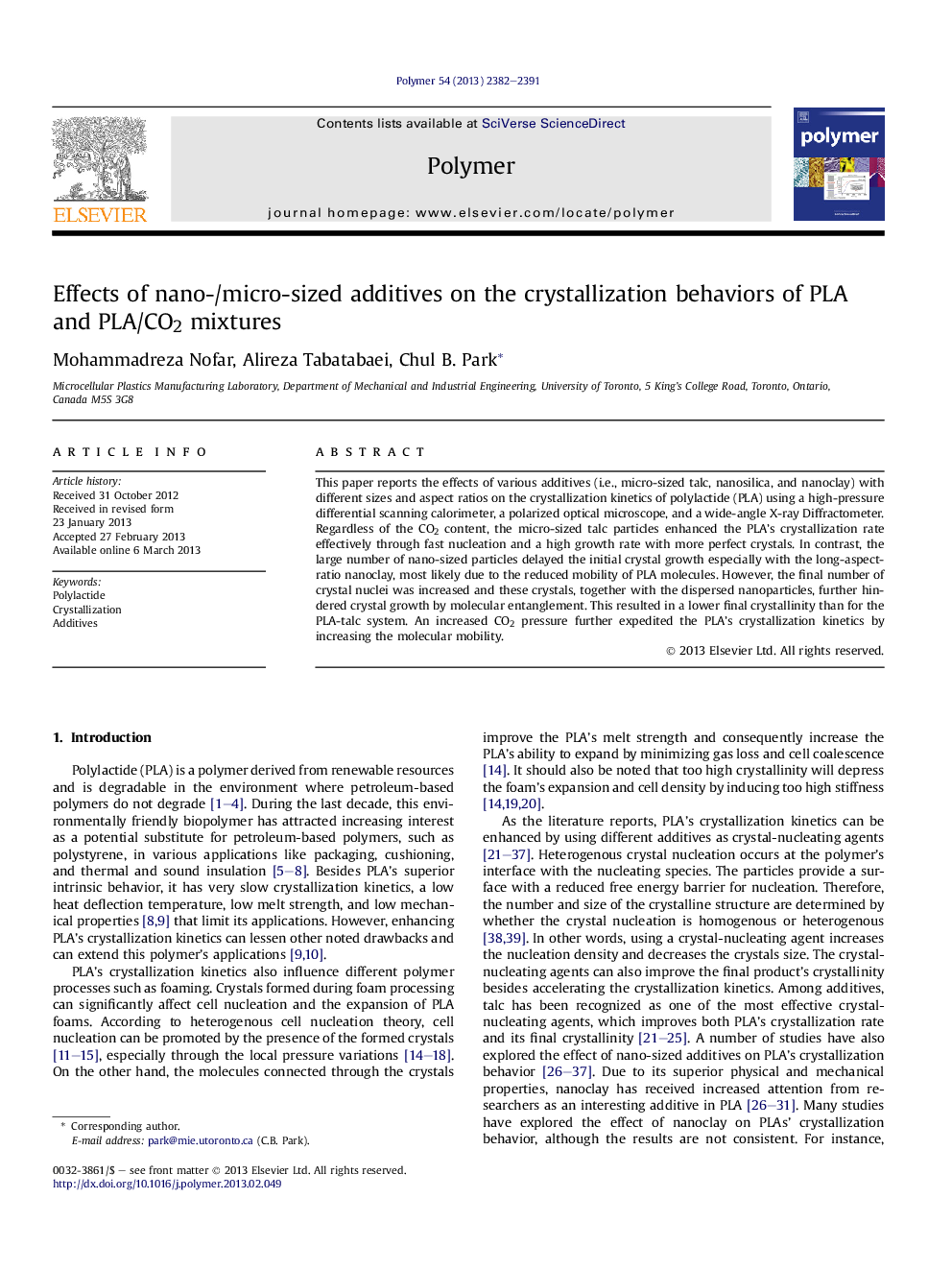| Article ID | Journal | Published Year | Pages | File Type |
|---|---|---|---|---|
| 5181752 | Polymer | 2013 | 10 Pages |
This paper reports the effects of various additives (i.e., micro-sized talc, nanosilica, and nanoclay) with different sizes and aspect ratios on the crystallization kinetics of polylactide (PLA) using a high-pressure differential scanning calorimeter, a polarized optical microscope, and a wide-angle X-ray Diffractometer. Regardless of the CO2 content, the micro-sized talc particles enhanced the PLA's crystallization rate effectively through fast nucleation and a high growth rate with more perfect crystals. In contrast, the large number of nano-sized particles delayed the initial crystal growth especially with the long-aspect-ratio nanoclay, most likely due to the reduced mobility of PLA molecules. However, the final number of crystal nuclei was increased and these crystals, together with the dispersed nanoparticles, further hindered crystal growth by molecular entanglement. This resulted in a lower final crystallinity than for the PLA-talc system. An increased CO2 pressure further expedited the PLA's crystallization kinetics by increasing the molecular mobility.
Graphical abstractDownload full-size image
